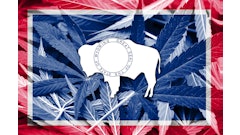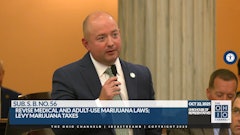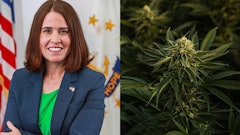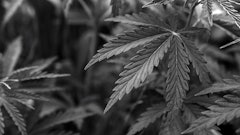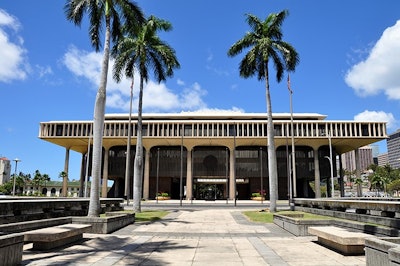
Hawaii has continued improving its 18-year-old medical cannabis program, but long wait times for patients and restrictive regulations still limit access, according to advocate Wendy Gibson.
Gibson, a field organizer for the Drug Policy Forum of Hawaii (DPFHI) and the Medical Cannabis Coalition of Hawaii (MCCHI), told Cannabis Business Times that the Department of Health (DOH)—which assumed oversight of the program from the Department of Public Safety (DPS) in 2015—is currently taking more than a month to process patient applications and renewals. The DOH turned more than 100 boxes of paperwork into an online system and is currently short-staffed, Gibson said.
“We have a mandatory patient registry system that relies upon an understaffed DOH to manage about 21,358 patients,” she said.
However, some aspects of the program are working well, Gibson said, and recent legislation has offered some improvements.
Since the program’s launch in 2000, patients and caregivers have been allowed to grow their own cannabis at home, she said. The number of plants allowed for home grow recently increased from seven to 10, she added, and patients who grow their own medicine have access to lab testing.
Originally, commercial cultivation was restricted to indoor, but shade houses and greenhouses meeting specific criteria are now permitted, Gibson said. Each licensed cannabis business can have two grow sites with up to 5,000 plants—3,000 initially with the ability to grow an additional 2,000 if the DOH provides authorization, she said.
Each licensee can then have two manufacturing facilities and two dispensaries, and the DOH may authorize one additional retail location, particularly when the location would serve a rural community, Gibson added.
“Dispensaries are helping educate patients about cannabinoids and terpenes, methods of delivery and safety,” she said. “They try to stay in touch with medical cannabis patients and caregivers to assess needs and help shape our laws and to improve patient access to the types of medicines they are seeking.”
CanPay, a mobile app, was recently introduced in the state to help resolve businesses’ need to operate with a cash-only model, Gibson added.
Continued Challenges
Interisland transport of medical cannabis is prohibited (except in the case of getting a batch of product to a testing lab), and the vertically integrated dispensary model continues to be highly restrictive, Gibson said.
“Horizontal integration would allow subcontracting for growing [and] manufacturing and hopefully include more of the old-timer, Hawaiian growers who have been largely excluded by vertical integration,” she said.
Smokeable cannabis and edibles are prohibited, and no delivery services are allowed under the state’s current law. Dispensaries may sell flower, capsules, pills, oils, tinctures, topicals and lozenges, and the purchase limit for patients is four ounces of product every 15 days.
“Many patients live in remote areas and travel to Oahu for medical facilities but cannot transport their medicine interisland,” Gibson said. “The dispensaries are also limited in what non-medical cannabis products they can sell. The DOH decides what is allowed due to broad powers granted them by the legislature. They recently ordered the removal of CBD products from dispensaries.”
Allowing dispensaries to sell hemp-derived CBD products, THC nasal sprays and smokeable products such as pre-rolls would help improve patient access, Gibson said, as would increasing the total number of retailers.
Sixteen dispensaries are legally permitted under Hawaii’s medical marijuana law, and only six are currently open in the state: Aloha Green, Noa Botanicals and Cure Oahu on Oahu; Maui Grown Therapies and Pono Life Sciences on Maui; and Green Aloha/Have a Heart on Kauai.
“The two Hawaii Island (Big Island) licensees have faced multiple permitting delays, including having to create their own water sources for fire-fighting,” Gibson said. “Recently, they have had to deal with torrential rain, lava flows and fires.”
Two additional licensees—Hawaiian Ethos and Lau Ola—planned to open over the summer, she added. Hawaiian Ethos just received permission to grow Aug. 14, and Lau Ola planned to open in July, but has not yet received state approval to cultivate and has since pushed its launch date to November, Gibson said.
“We still don’t have dispensaries on the Big Island, so some patients who cannot grow rely upon the generosity of other patients who grow or the unregulated black market,” she said. “Many patients on the Big Island have been separated from or have lost their source of cannabis medicine due to increased levels of acid rain, S02 gases and evacuations.”
The list of qualifying conditions can also be restrictive, Gibson said, despite the recent addition of PTSD, lupus, epilepsy, multiple sclerosis, rheumatoid arthritis and ALS. “The DOH process of adding qualifying conditions is not working well. Many more patients could benefit from access to this medicine if doctors or nurses were making the medical judgment rather than legislators or DOH.”
In July, Gov. David Ige vetoed a bill that would have allowed some patients to use medical marijuana to treat opioid addiction, a decision that received national attention.
“The use of cannabis for treating pain has been well validated but should not be confused with treating substance use disorders,” Keith Ridley, spokesperson for Hawaii’s Medical Cannabis Program in the DOH, told Cannabis Business Times. “Evidence for treating opioid or other substance use disorders or withdrawal symptoms with cannabis is largely anecdotal and has not been approved or recommended by any relevant federal agency such as the FDA or CDC. “
Ige’s veto message stated that the DOH already has a process in place that would allow for opioid addiction and other new medical conditions to be added to the list of qualifying conditions, so the legislation was unnecessary.
“We are concerned that one of the arguments leading to the veto is that the DOH should be the exclusive decision-making body when adding new conditions to the list of qualifying conditions,” Gibson said. “The DOH process is not working well: the procedural obstacles that they've placed to get a condition certified are dependent upon a prospective patient stepping forward and then surveying existing scientific literature on whether the use of cannabis is effective.”
“The petition process that the legislature passed … is the most appropriate and scientifically based mechanism for considering any new qualifying conditions for the use of medical cannabis,” Ridley said. “Adding new conditions through additional legislation circumvents this well thought out, vetted and agreed upon process established through the public administrative rules process.”
Change is Coming
Many of the positive changes to the state’s medical cannabis laws resulted from recommendations from a legislative task force and working group that both Gibson and DPFHI’s executive director, Carl Bergquist, served on, Gibson said. A 2014 Hawaii Medical Marijuana Dispensary Task Force and a 2017 Act 230 Medical Cannabis Legislative Oversight Working Group submitted recommendations that resulted in legislation to address dispensary operations, edibles, patient access, employment, products and education, she said. Recent bills include SB2488 to set up a working group to analyze how insurers might pay for medical cannabis and HB2742 to allow the DOH to consolidate all medical cannabis programs into one office.
In addition, an omnibus bill (HB2729 HD2) recently passed to address other patient access issues, Gibson said. The legislation extends the expiration of patient certifications for up to three years for chronic conditions, giving certifying physicians the option to extend the medical marijuana card if they deem it necessary for a particular patient. The omnibus bill also allows dispensaries to sell vaporization devices and cartridges, increases the maximum allowable THC limit for multi-pack cannabis products and single containers of oil, and establishes standards and criteria for reciprocity for qualifying out-of-state medical cannabis patients.
“The plan is for Hawaii to recognize out-of-state medical cannabis patients who are currently registered in their home state,” Gibson said. “They must have a debilitating condition that Hawaii recognizes for the use of medical cannabis.”
Out-of-state patients with a medical condition included on Hawaii’s list of qualifying conditions will be able to get a temporary medical marijuana card that is valid for 60 days and use it at Hawaii’s licensed dispensaries, she said.
The DOH expects the out-of-state patient registration program to be in place in early 2019, Ridley said.
The omnibus bill also allows for video conferencing between doctors and patients (after an initial office visit), so patients can teleconference with their physicians to keep their medical marijuana certifications up-to-date. Parents or guardians can also register as caregivers for one or more qualifying minor patients under the new legislation, Gibson added, and the bill established a working group to analyze issues such as patient drug testing and employment, as well as what regulations should be crafted for edible products. The working group met in August and September with a final meeting scheduled for Oct. 2, and the group will issue a final report in January 2019, when the next legislative session kicks off.
“We are hopeful that conditions will improve once the two DOH offices are consolidated and staffing shortage issues are worked out,” Gibson said.
Top Image: © Jeff Whyte | Adobe Stock
















